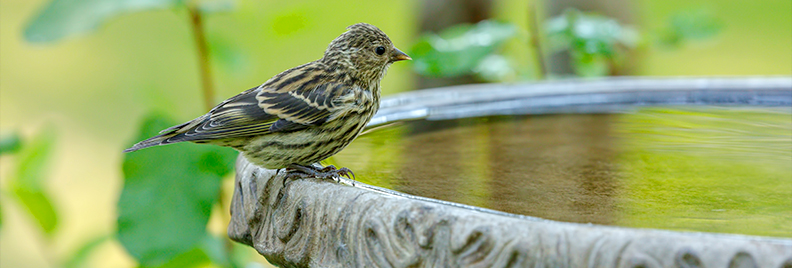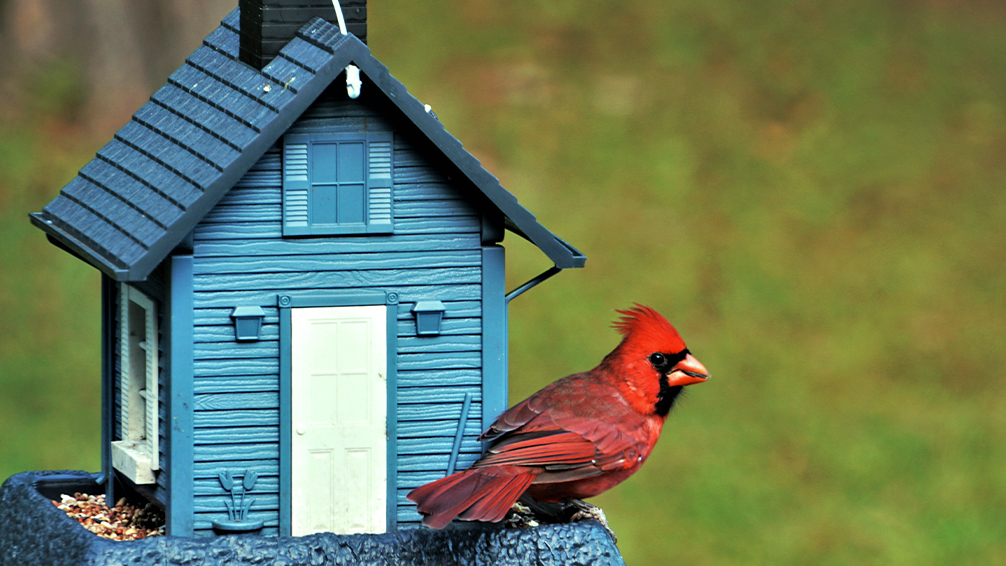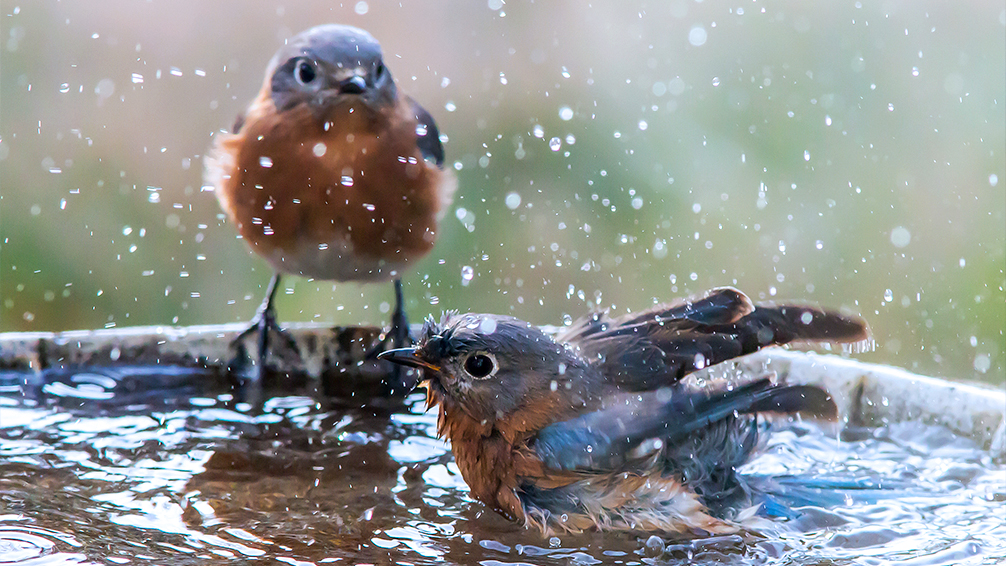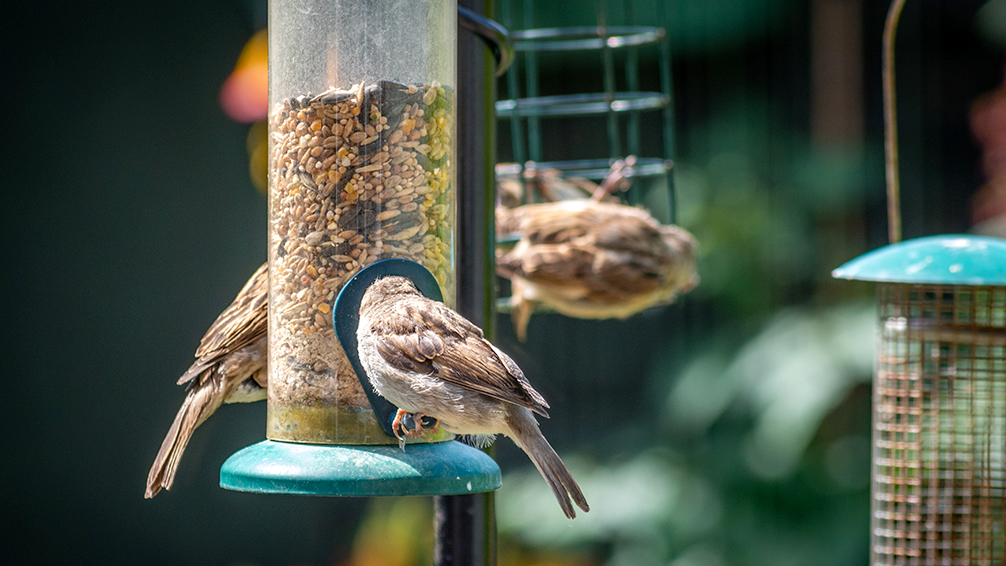
The Birds Are Back! Spring Feeder and Bird Bath Care
Now that things are getting hotter down south and getting warmer up north, millions of birds are making their way back up to their spring and summer homes to settle down and make some babies. That means we’re getting the usual onslaught of feathered spring tourists passing through Houston, and these avian birds are always looking for a pit stop. If you love to admire the different specimens as they pass through, the best way to help them out and get a closer look is to turn your backyard into an avian vacation destination. However, hosting these visitors isn’t all fun and games—it also means you’re responsible for keeping the area well-preened.

Tips for Feeding Birds Responsibly
If you choose to play host for the hoards of birds descending on Houston right now, you might as well be a good one. Even though they can’t exactly give you a rating on Airbnb, the choices you make as an avian hotelier have a big impact on the birds’ wellbeing. Not to get grim about it, but some well-meaning decisions can spell doom for your feathered friends. Keep them safe and healthy with these basic ground rules:
- Clean up after them. Birds will scatter seeds and make other messes that can end up becoming an eyesore. However, that leftover seed has a worse consequence; it can end up attracting even more guests to your property—like rodents, for example. Keep the feeder area tidy, and you’ll attract the right kinds of visitors.
- Place feeders away from windows. Birds are not especially good at telling a window apart from an entrance. Keep them from colliding with glass panes by placing feeders at least 30 feet from your house.
- Clean and top up feeders and birdbaths frequently. We’ll go over how in the next few sections, but the main point here is to be consistent. Cleaner birding supplies mean healthier birds—and more of them!
- Keep your cat inside! This one should be obvious, unless your idea of birding involves having them delivered to your doorstep.

How to Maintain a Birdbath
Birdbath maintenance is good for everyone; it keeps the bird’s water source fresh, and it prevents the water from becoming a hot spot for mosquitos. It only takes a couple of minutes, so try to get in the habit of doing it every day.
Make a cleaning solution in a spray bottle using nine parts water and one part white vinegar. This all-natural solution is safe for the environment and still effective at killing bacteria.
Before you start, grab a pair of rubber gloves and a clean scrubbing sponge. When it’s time to clean the birdbath, tip it to the side to empty it out, spray down the basin, and give it a quick scrub with the sponge. Rinse thoroughly with fresh water from the hose, then fill it to the top. Presto, your birdbath now has all the appeal of the rooftop pool at the Marriott Marquis!

How to Clean Birdfeeders Properly
Proper cleaning is definitely necessary to keep your bird feeders sanitary. Birds are delicate little creatures with delicate constitutions, and they can’t handle too much bacteria in their food. (Can you blame them?) Before cleaning any type of birdfeeder, always wear gloves! Latex dish gloves work great; choose the right size to make sure you can properly handle the small parts of your feeder.
- Seed Feeders: Seed feeders, like tube feeders, can get pretty nasty after a while. The fats in the seeds don’t take long to go rancid, especially in hot and wet weather. Decomposing birdseed grows yucky mold and fungus, which can spread and make the poor birds very sick. Empty and clean your seed feeders every week or two, either by throwing it in the dishwasher or by giving them a good soak in a sink full of hot water with a few tablespoons of bleach. Take the whole feeder apart and clean each part with a bottle brush or clean sponge. Rinse the feeder well and let it dry completely before refilling.
- Hummingbird Feeders: Since these feeders are filled with sugar water, the sugars don’t take long to break down and turn into alcohol. Hummingbirds are very much like your college roommate in the sense that they have a dreadful alcohol tolerance. That means you’ll need to clean and change the nectar in your hummingbird feeders often—ideally every 2 or 3 days—and sanitize the area around the feeder as well. This will also help to keep ants and wasps from crashing the party. To clean these feeders, give them a good wash in hot water with a tiny bit of bleach, and give the inside a scrub with a bottle brush. Make sure to run all the tiny parts under hot water to dissolve any blockages. Rinse thoroughly, and refill once air-dried.
- Wooden feeders really shouldn’t be a long-term feeding option. The look of the wood is very chic, but the porous material is basically impossible to sanitize. If you put out a wood feeder, prepare for it to act as a short-lived decoration and toss it (or re-purpose it as indoor decor) once it’s empty.

If you keep your baths and feeders in pristine condition, expect the word to get around! Birds will always opt for the cleaner, tidier spot to have a snack and a dip, so you’ll get plenty of visitors to admire from your porch. Get in the habit this spring, and expect plenty of return customers next year!
